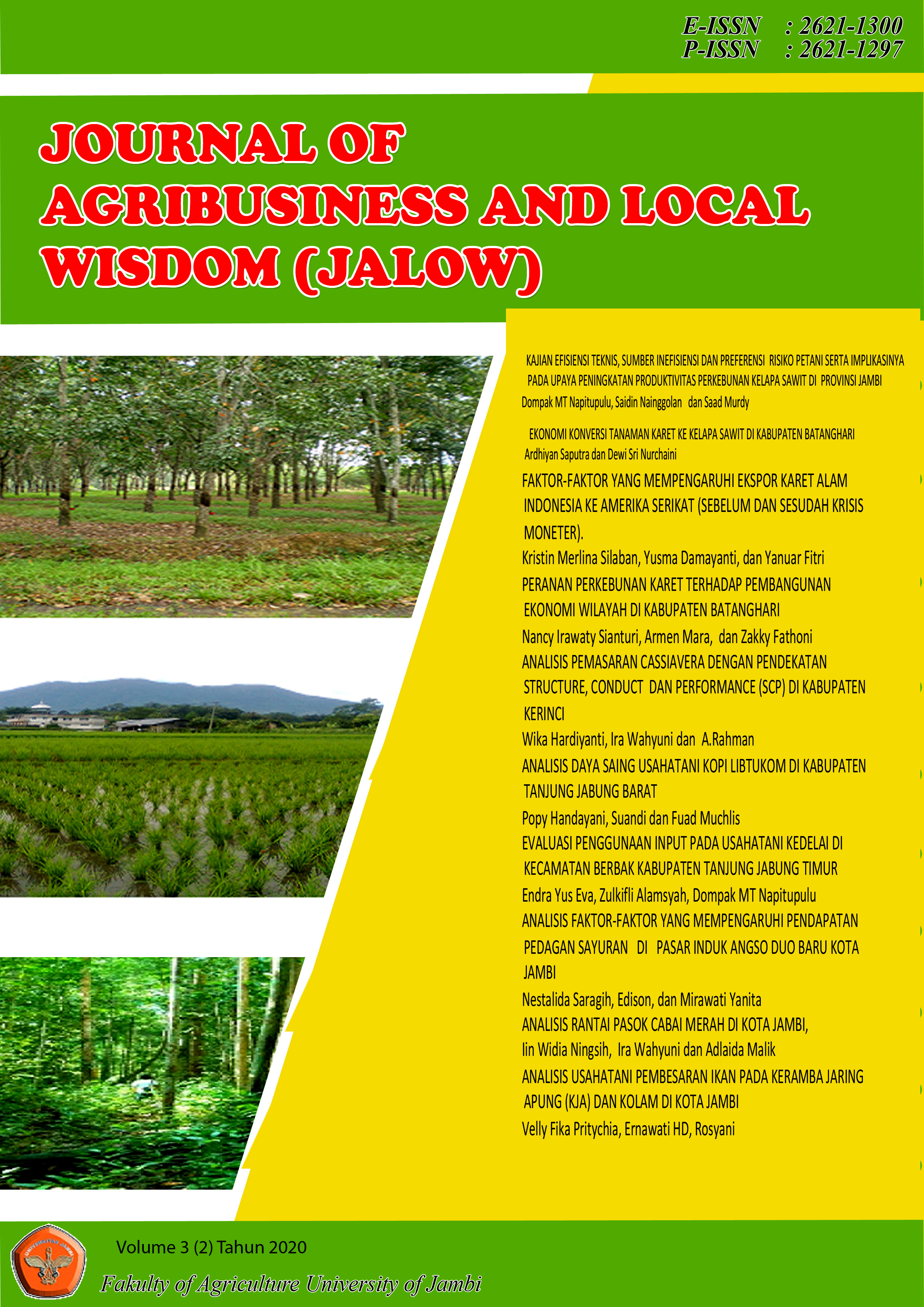KAJIAN EFISIENSI TEKNIS, SUMBER INEFISIENSI DAN PREFERENSI RISIKO PETANI SERTA IMPLIKASINYA PADA UPAYA PENINGKATAN PRODUKTIVITAS PERKEBUNAN KELAPA SAWIT DI PROVINSI JAMBI
DOI:
https://doi.org/10.22437/jalow.v3i2.11614Keywords:
technical efficiency, technical inefficiency, farmer's risk, stochastic frontier analysisAbstract
The objectives of this study were (1) to determine the technical efficiency of the input use of smallholder oil palm plantations, (2) to determine the factors causing the technical inefficiency of smallholder oil palm plantations, and (3) to analyze the risk behavior of oil palm smallholders in Jambi Province. This research was conducted in Muaro Jambi, Batanghari, Sarolangun and Tebo Districts. The location was selected purposively. The sample size is 280 farmers. The estimation method used the Kumbhakar Production Function model with the stochastic frontier approach. The results showed that the use of production inputs either simultaneously or partially had a significant effect on FFB production. The use of production inputs has not technically efficient yet (ET <0.63). The source of technical inefficiency is significantly influenced by the age of the farmer, land distance, and area. The farther the land is; the older the farmer is; and the more land is cultivated by the farmer, the less efficient oil palm farming is. Oil palm farmers behavior in Jambi Province is risk averse. This behavior impacts on the allocation of inputs used. The more avoidance of risks, the less the allocation of input use, and the farm productivity achieved will be lower. The combination of the use of palm oil production inputs will affect the level of technical efficiency. The low average of technical efficiency indicates that the risk preferences of oil palm farmers have an effect on technical efficiency. Increased productivity that takes into account the production function, risk function, and profit function must be used as much as the optimal use of input in order to obtain a productivity increase of 28 - 49%












